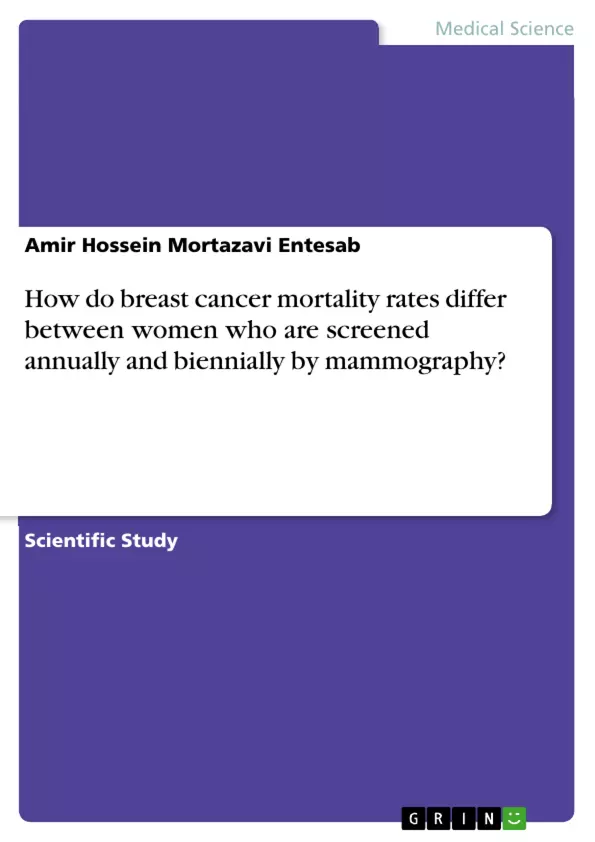It is this review’s hypothesis that annual mammography is proving to be statistically more beneficial than biennial screening in the reduction of breast cancer mortality rates.
Breast cancer is the most common non-skin cancer and second deadliest cancer for women. Mammography, an X-ray of the breast, serves as the primary diagnostic tool for breast cancer detection as it reduces the risk of death through early detection and treatment of the disease.
The medical community, however, has not agreed on how frequently such screenings should be performed.
Various organizations have produced different guidelines regarding the suggested frequency of routine mammograms. For example, the United States Preventive Services Task Force (USPST) endorses biennial mammography screenings for females ages 50-74, whereas the American Cancer Society (ACS) advocates annual mammography screenings for women beginning at age 40.
Inhaltsverzeichnis (Table of Contents)
- Abstract
- Introduction
- Methods
- Results
- Discussion
- Conclusion
Zielsetzung und Themenschwerpunkte (Objectives and Key Themes)
This research aims to analyze the effectiveness of different mammographic screening frequencies, particularly annual versus biennial screenings, in reducing breast cancer mortality rates. The study examines the scientific evidence and existing guidelines from various organizations, such as the American Cancer Society (ACS) and the United States Preventive Services Task Force (USPSTF), to assess the benefits and limitations of each screening interval.
- Impact of mammographic screening frequency on breast cancer mortality rates
- Comparison of annual and biennial mammogram screenings
- Analysis of the diagnostic advantages and disadvantages of different screening intervals
- Evaluation of the guidelines provided by various medical organizations
- Exploring the relationship between early detection and breast cancer survival rates
Zusammenfassung der Kapitel (Chapter Summaries)
- Abstract: This section introduces the study's objective, which is to investigate the potential benefits of annual mammographic screening compared to biennial screening in reducing breast cancer mortality rates. The study highlights the existing controversy surrounding the optimal screening frequency and the different guidelines proposed by various medical organizations.
- Introduction: This chapter provides background information on breast cancer, its prevalence, risk factors, and mortality rates. It discusses the significant decrease in breast cancer deaths observed after the increased adoption of mammography screening in the 1980s. The introduction also emphasizes the ongoing debate regarding the optimal frequency of mammograms and the need for further research to inform clinical practice.
- Methods: This chapter outlines the methodology employed in the research, including the databases searched, keywords used, publication date limitations, and study population.
- Results: This chapter presents the findings of the study, focusing on the comparative analysis of annual versus biennial mammographic screenings. It analyzes the results of various studies, including those examining the incidence of late-stage disease and the effectiveness of different screening intervals in detecting early-stage cancer.
Schlüsselwörter (Keywords)
The main keywords and focus topics of the text include breast cancer, screening program, mortality rate, statistics, annual, biennial, frequency, mammography, risk, American Cancer Society, United States Preventive Services Task Force, and late-stage breast cancer. The study delves into the impact of different mammographic screening frequencies on breast cancer mortality rates and aims to provide valuable insights into the ongoing debate surrounding optimal screening intervals.
- Quote paper
- Amir Hossein Mortazavi Entesab (Author), 2015, How do breast cancer mortality rates differ between women who are screened annually and biennially by mammography?, Munich, GRIN Verlag, https://www.grin.com/document/320377



